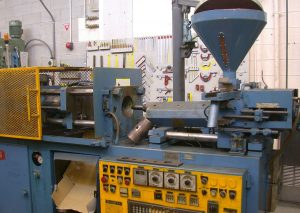
With origins dating back to the 1800s, injection molding is an age-old manufacturing process that’s used to create a variety of components and parts. Also known as plastic injection molding, it lives up to its namesake by injecting plastic into a mold cavity. The raw plastic typically comes in the form of pellets that, when fed into the injection molding machine, are heated and liquefied. To learn more about injection molding and how it’s performed, keep reading.
The Basics of Injection Molding
Injection molding is a molding process used in the manufacturing industry to create plastic components and parts. It requires the use of a special machine, known as an injection molding machine, that contains all the necessary elements for this molding process. The injection molding machine features a hopper, a heater, a reciprocating screw, a nozzle and a mold. With these elements, it’s able to convert plastic pellets into components and parts featuring the shape of the mold’s cavity.
Feeding the Plastic Pellets Into the Injection Molding Machine
To perform injection molding, manufacturing companies feed plastic pellets into an injection molding machine. The top of the injection molding machine features a hopper with a large opening. As the plastic pellets are fed into the hopper, they fall into the machine’s reciprocating screw where they are heated. Heat, of course, causes the plastic pellets to liquefy. The hot, melted plastic is then guided into the mold cavity. The reciprocating screw guides the liquefied plastic into the mold cavity.
Closing the Mold Cavity
After the mold cavity has been filled with an appropriate amount of liquefied plastic, it’s closed. This allows the mold cavity to maintain pressure, thereby preventing the finished component or part from shrinking.
Waiting for the Plastic to Cool
Once the mold cavity has been filled with liquefied plastic, it’s allowed to sit at room temperature for a given amount of time to cool and harden. As the heated plastic pellets cool, they harden while subsequently taking the shape of the mold cavity.
Removing the Finished Component or Part from the Mold Cavity
The final step in injection molding involves the removal of the finished plastic component or part from the mold cavity. Depending on the type of injection molding machine used, manufacturing companies may be able to “eject” the finished component or part. Alternatively, they may have to manually remove it. Regardless, all injection molding processes conclude with the removal of the finished component or part from the mold cavity.
